Notes
Ahmadinejad's Ready-to-Wear: Government Approved to Make Women Look Islamic and Beautiful
When reflecting on the fashion dictates of her time, Elizabeth Cady Stanton asked, “Is being born a woman so criminal an offense that we must be doomed to everlasting bondage?” For Iranian women, the answer, it seems, is yes.
Iran is, of course, highly restrictive when it comes to women’s attire, so the fact that Cady Stanton’s lament still rings true there is not surprising. Slightly less expected is the fact that Iranian President Mahmoud Ahmadinejad has (ostensibly) taken up the mantle of Iranian dress reform himself. The Washington Post reports that Ahmadinejad wants to “settle” the dispute between Shiite Muslim clerics, who advise women to cloak themselves in black from head to toe, and Iran’s “urban fashionistas” who “increasingly prefer tight-fitting coats and scant head scarves.” The president’s, shall we say, “modest” proposal is to promote “government-approved apparel for women, garments intended to introduce an array of clothes that are ‘Islamic and beautiful’ at the same time.” Ahmadinejad launched his new spring line at an event where the mostly male panel of judges graded the outfits on their “functionality, design, and ‘Islamic-ness.’” The move is being hailed as a welcome step in the right direction by some Iranian women and criticized by hard-liners who see these ready-to-wear ensembles as evidence of the ways in which Western values are encroaching upon Iranian society.
Among the many ironies showcased in this picture of the event is the fact that the men who judge the “Islamic-ness” of Iranian women’s fashion choose for themselves a Western-style sport coat and open-collared dress shirt—avoiding the confines of even a necktie. But lest we be dazzled by the optimistically bright turquoise of Ahmadinejad’s signature coat, let’s remember that in a modern Iran, sexism is still in fashion.
The most visible women in this image are plastic—the faceless, voiceless mannequins aptly symbolize the position of women in Iran—with or without Ahmadinejad’s version of dress reform. Real women are relegated to the background, shrouded almost to the point of invisibility.
The men in this photo retain their ability to fondle women’s clothing and pass judgment on women’s appearance. More importantly, however, the photo demonstrates how easily Iranian men may congregate in public, express (at least some of) their opinions, and make decisions that exclusively affect women. If Iran’s male population is unwilling to allow women to choose their own clothes, what will it take for them to recognize women as full adults—much less as citizens. Ahmadinejad’s “compromise” is not a step in the right direction. It’s a step in the same direction.
In 19th-century Britain and the U.S., the dress reform movement was linked to other important causes of the progressive era—most directly woman suffrage and labor reform. For women to be able to enact full citizenship rights, they had to be freed from the literal strictures of corsets that constrained breathing and displaced vital organs. The women at the forefront of dress reform recognized that women who lacked control over what goes on their bodies would never exercise full rights over their bodies. As 19th century dress reformer Amelia Jenks Bloomer (yes—she popularized one alternative to the gut-wrenching corset) suggested, “When you find a burden in belief or apparel, cast it off.”
If only that were a realistic option for Iranian women.
— Karrin Anderson
(photo 1: Vahid Salemi/AP. caption: Two Iranian women, view a dressed mannequin, as they visit a women’s dress show, organized by the government, in Tehran, Iran, Sunday, Nov. 20, 2011. Under Iran’s strict Islamic regulations, women should cover themselves head to toe, a controversial point since its 1979 Islamic Revolution. Women are allowed to show their faces. photos 2 – 4: modelebas.farhang.gov.ir — with slideshow.)
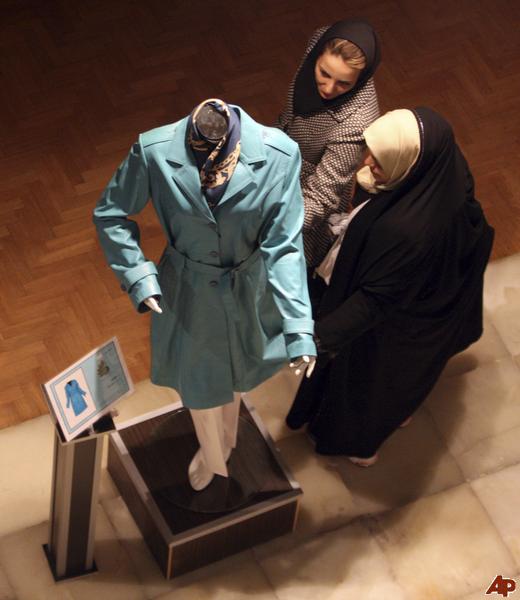

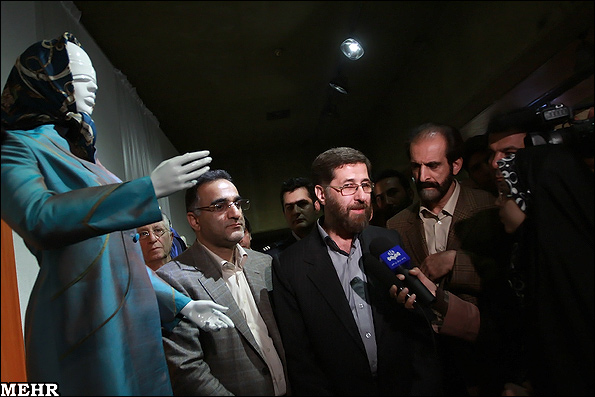
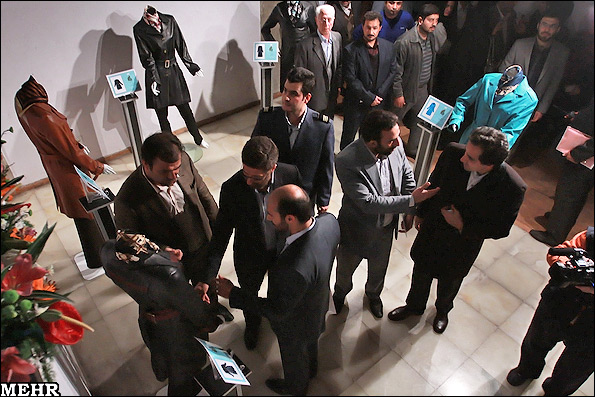
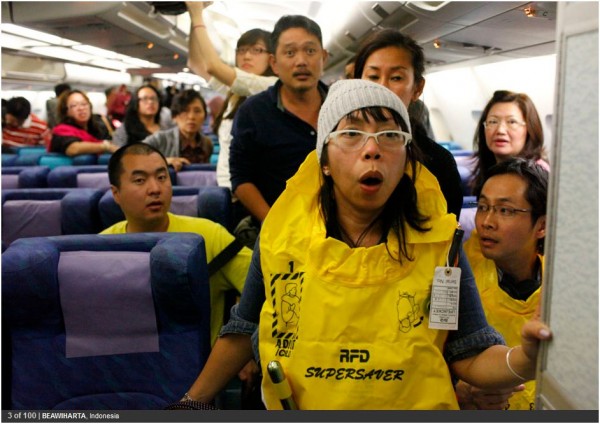
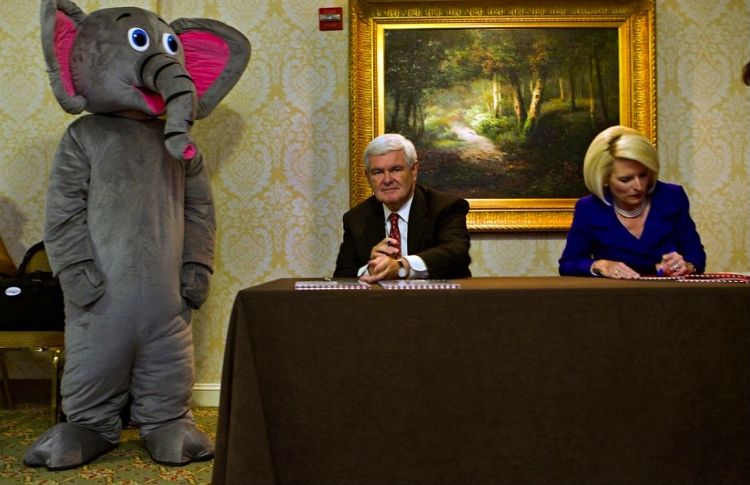
Reactions
Comments Powered by Disqus